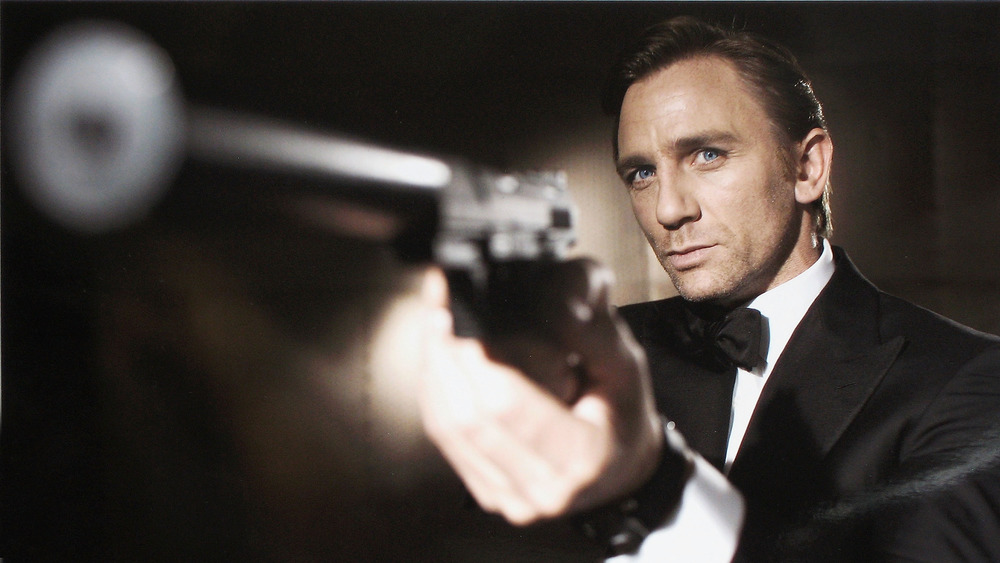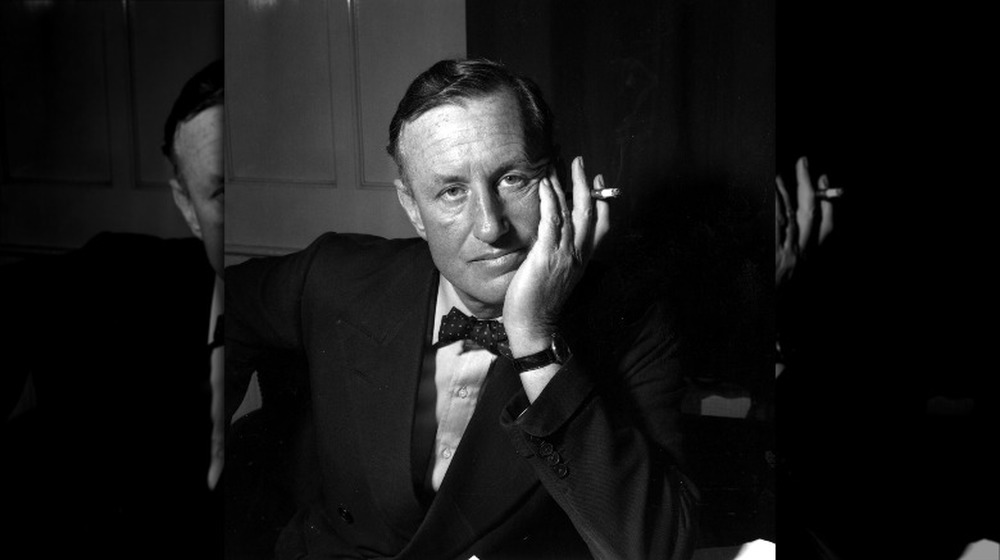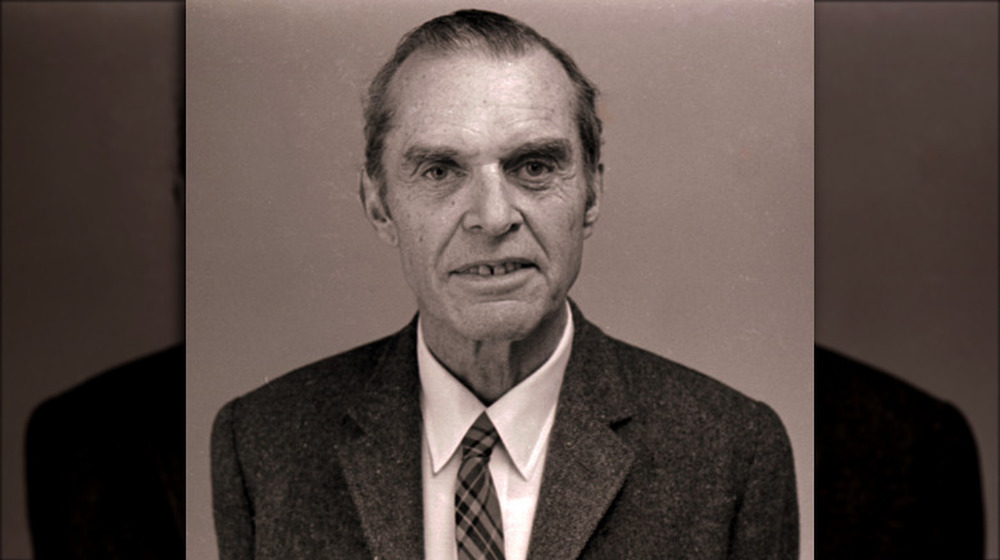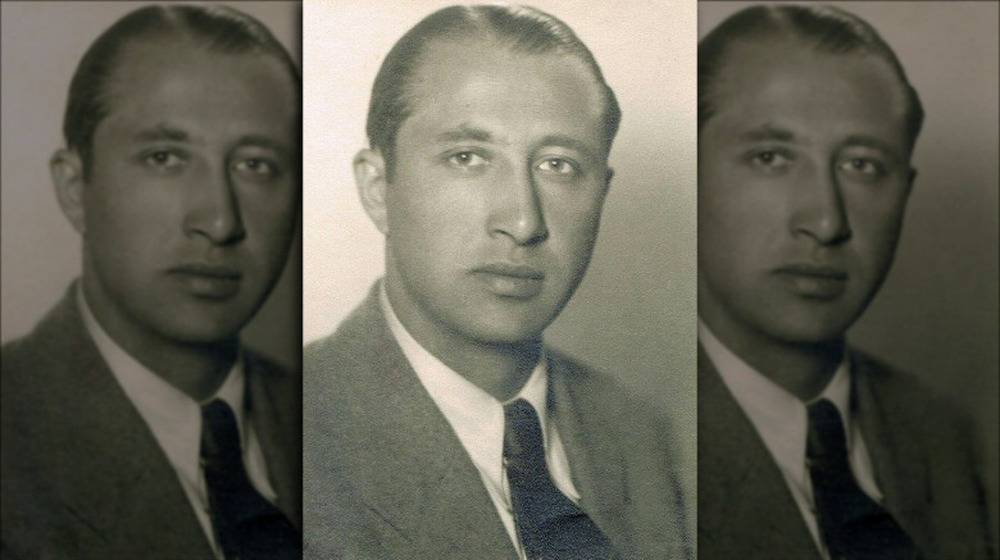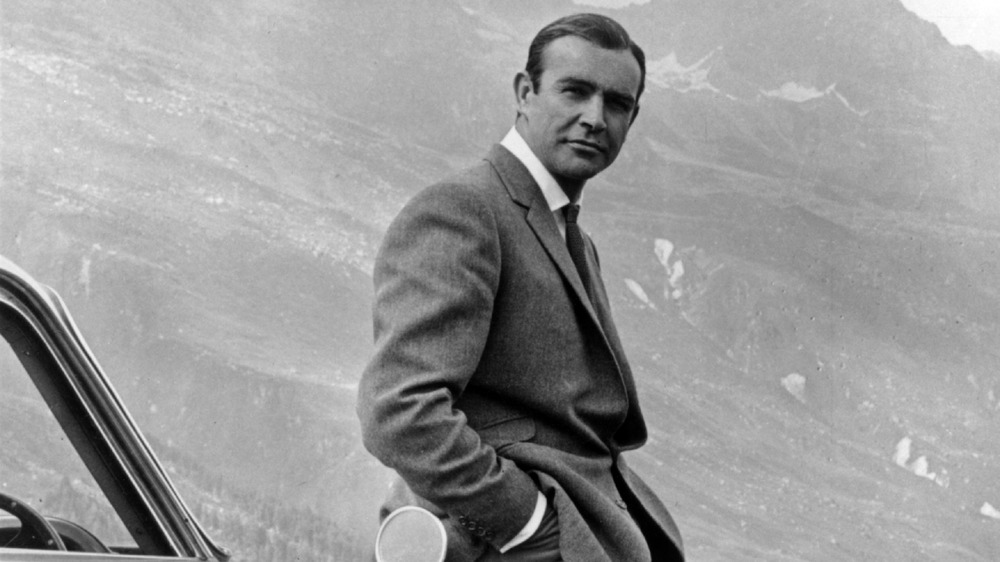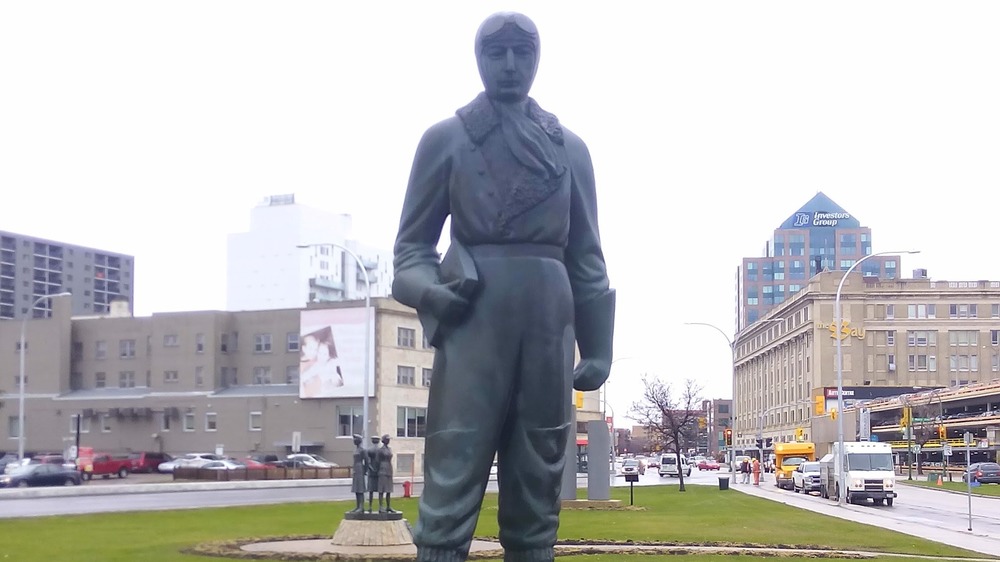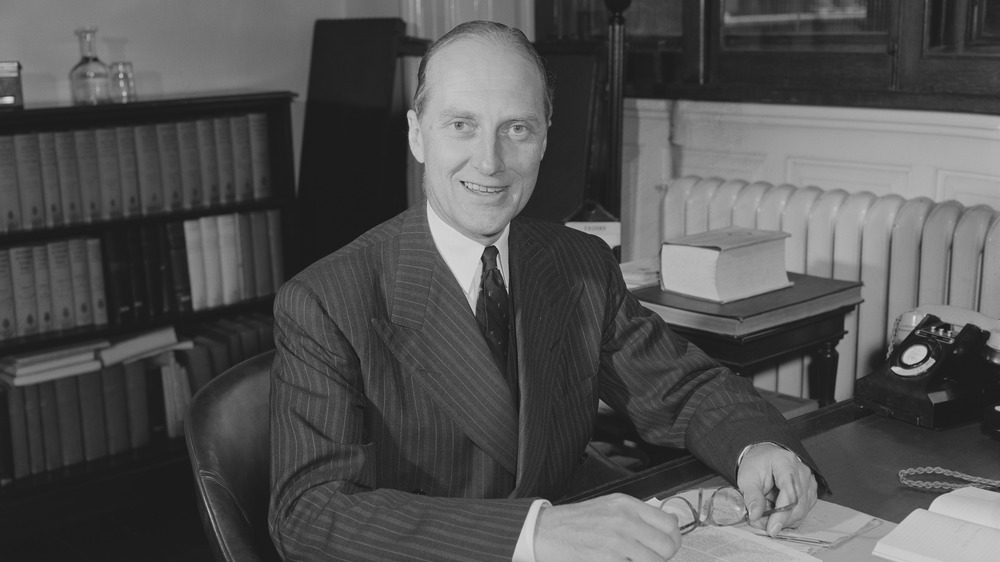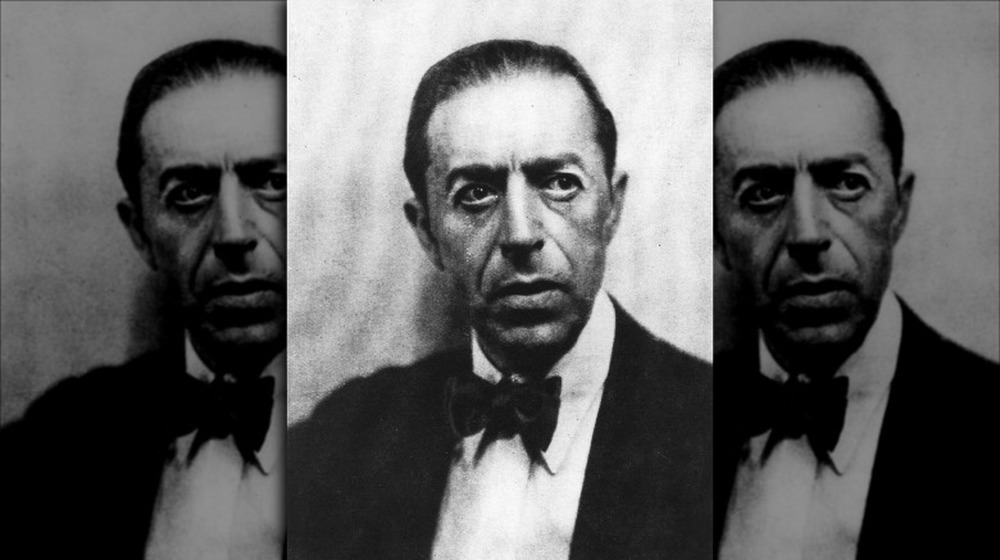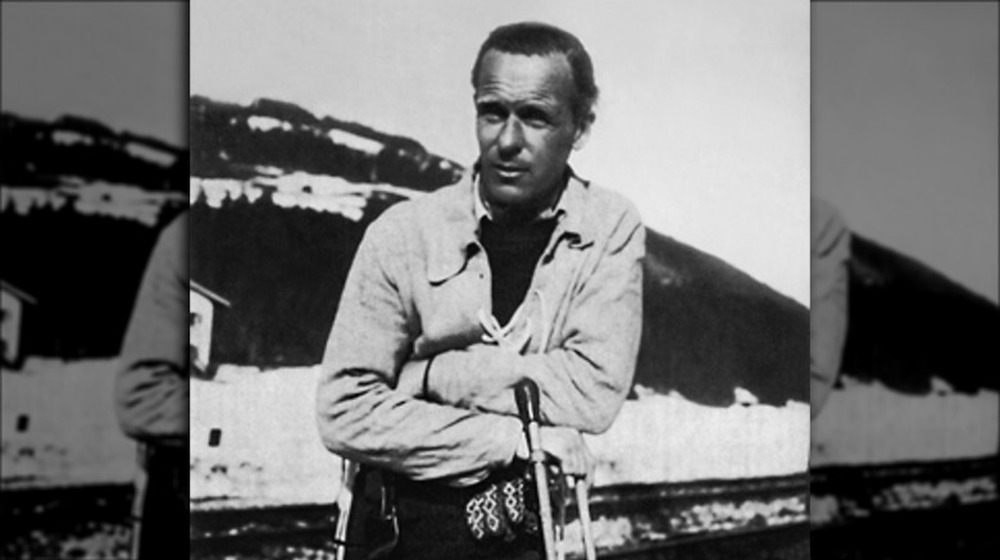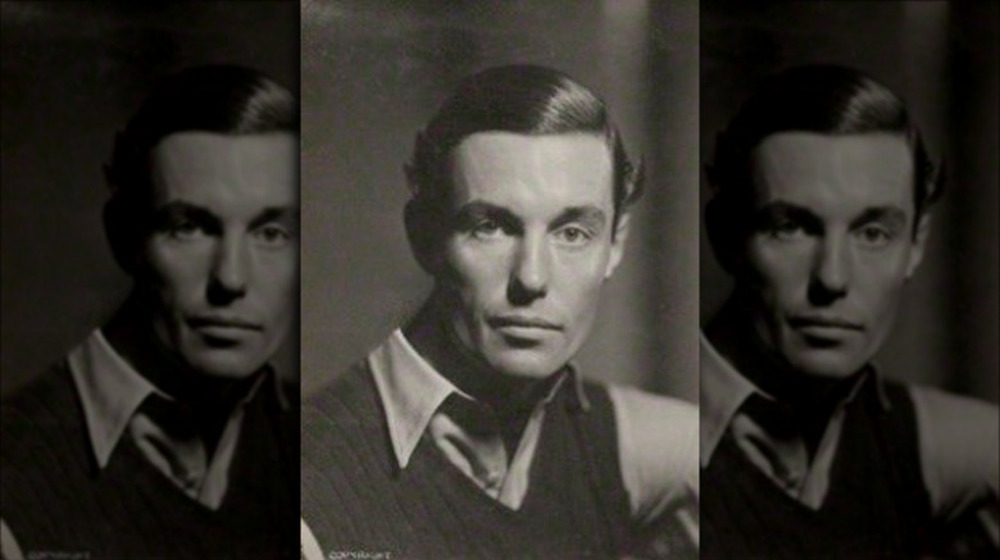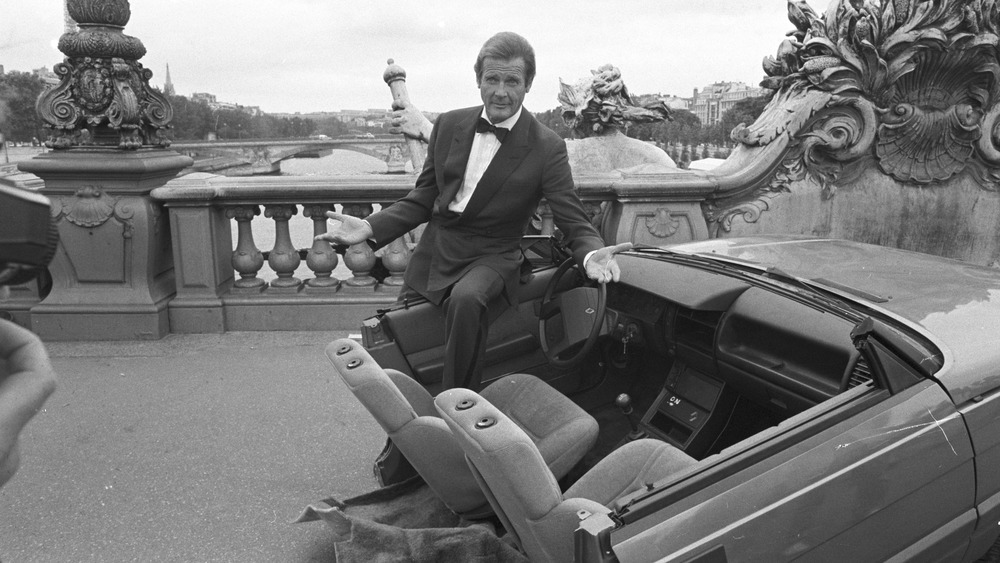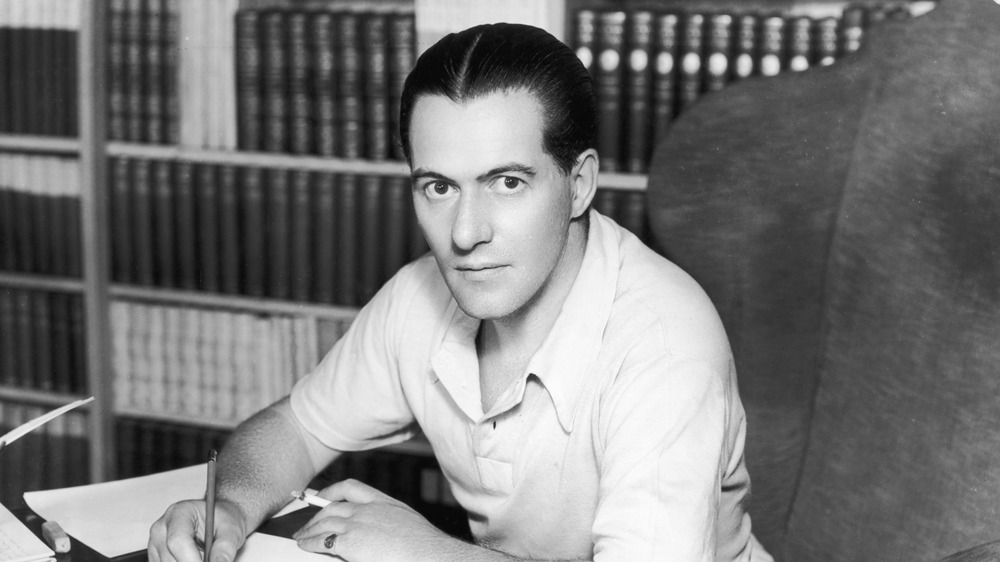These Are The People Who Inspired James Bond
With the passing of Sean Connery and the pandemic-related delay of No Time to Die, James Bond had some tough breaks in 2020. Bond is a remarkable character in many ways, but especially due to his longevity. There are very few bits of pop culture dating back to 1952 that remain essential in the 2020s, and James Bond is one of them.
One reason for Bond's longevity is the thought and care that author Ian Fleming put into crafting the character. James Bond would be kind of a terrible secret agent, of course, because he waltzes around using his own name and has several instantly recognizable habits and tics—the shaken-not-stirred martinis, the bespoke suits, the many, many tiny gadgets. But those tics are also what has helped ensure the character's immortality.
Another reason Bond feels so well-developed on the page? Fleming himself really did work in the espionage business, and based him on a number of real and fictional inspirations. In other words, Fleming knew from his work both reading and writing top secret reports what real spies did and how they acted, and he knew just how much fiction to inject into the story to make it sing. That means that there are many real-life spies who served as models for 007—these are the people who inspired James Bond.
Ian Fleming himself
Ian Fleming was not a humble man, and he was a man of strong opinions. As The Rake reports, much of James Bond's famous globe-trotting lifestyle and snobbish opinions about food, wine, and clothes came directly from Fleming himself. New Statesman notes that Fleming and Bond shared many characteristics—Bond is the same height as Fleming, wears the same clothes, and smokes the same cigarettes. Essentially, Fleming took himself and his wartime experiences in the intelligence world and inserted it into a more handsome, more athletic fictional version of himself.
And along with the superficial (but quite fun) preferences for the good life—many Bond novels read almost like travelogues, lingering over meals and cocktails and the hidden interiors of exclusive places—there's also plenty of Fleming's deplorable chauvinism and racism in Bond. Bond frequently refers to people of color as apes or other animals, bemoans the fact that women had the vote, and uses the word "pansy" to refer to homosexuals without batting an eye. There's even the moment when Pussy Galore, heavily implied to be a lesbian, falls into bed with Bond because she's been cured of her queerness by his manly powers—Bond literally says, "Any girl who says she's gay hasn't met me yet."
Fleming always maintained that he didn't like Bond as a person, but there's little doubt that Bond was heavily inspired by Fleming's own tastes and feelings.
American ornithologist James Bond
The name James Bond has become synonymous with spy thrillers—and the concept of the impossibly suave, impossibly capable secret agent. The phrase "Bond—James Bond" has become embedded in pop culture so thoroughly you don't actually need to be familiar with the novels or the films to understand the reference. And yet, the name came about because Fleming wanted it to be boring. He knew that he would be putting the character into crazy situations, surrounded by crazy characters. His instincts told him that his character needed to be named something mundane to balance it all out.
As a child, Fleming had been a fan of a book called Birds of the West Indies, written by an American ornithologist named James Bond. For real. You can imagine Fleming scanning his bookshelves at his house in Jamaica, Golden Eye, and landing on this old favorite from his youth and thinking that a bird expert was the ideal person to inspire a secret agent's name.
Interestingly, as The Sunday Times notes there was actually an English spy named James Bond. He worked undercover in Poland during the 1960s, but it's doubtful that Fleming was actually aware of him, and no evidence the two ever met or interacted. That means all the credit for the name goes to an American bird watcher.
Dusko Popov, the triple agent
When you start looking into the real-life figures who inspired James Bond, the improbably named Dusko Popov is right at the top of the list. Born in Serbia, Popov lived a lavish lifestyle, but earned a doctorate in law as well. As explained by Culture Trip, Popov was induced to join the Abwehr, the Nazi secret service—but then walked into the British Embassy and offered his services to them as a double agent.
As USA Today reports, the British government lost little time in putting Popov to use. He quickly became an effective double agent for them—he was especially effective in stealing money from Nazis. This is where Ian Fleming comes into the picture—in 1941 he was assigned to keep an eye on $40,000 traveling with Popov. Fleming watched Popov play a breathtakingly bold bet at the baccarat table in the Casino Estoril in Portugal. The whole episode is clearly the inspiration for the premise of the first Bond novel, Casino Royale.
Popov was later ordered by the Nazis to start spying on the Americans, so the British loaned him to their cousins across the sea, making Popov a triple agent. After the war, Popov moved to the south of France and lived an enviable life of leisure, and no one knew that he was a huge part of the inspiration for James Bond.
Forest 'Tommy' Yeo-Thomas—the White Rabbit
There's no doubt that Ian Fleming drew on his own work in the intelligence field during World War II for James Bond inspiration. Fleming himself said so—as The Rake reports, he was quoted as saying "I extracted [the plots] from my wartime memories, dolled them up, attached a hero and a villain, and there was the book."
So it's actually not much of a surprise that a man named Forest Yeo-Thomas (known as Tommy) inspired a great deal of James Bond's adventures and style. As Business Insider notes, Ian Fleming actually wrote memos about Yeo-Thomas, briefing his colleagues on the spy's exploits.
And those exploits remain legendary. Yeo-Thomas, code-named the White Rabbit, went behind enemy lines in France three times carrying out missions. On that last foray into occupied territory, he was captured by the Gestapo, arrested, and sent to the notorious Buchenwald concentration camp. He managed to escape, though. There are many examples of plot points from Bond novels that probably came from Yeo-Thomas' real-life adventures, like the time he was being hunted by the Nazis and found himself sitting next to Klaus Barbie, a high-ranking member of the Gestapo, on a train. He kept his cool and struck up a conversation, managing to slip away when the train arrived in Paris. This event is paralleled in the novel From Russia with Love when Bond finds himself sharing a train with an enemy pretending to be his friend.
Sir William Stephenson—the bon vivant
His code name was Intrepid, and Sir William Stephenson is widely regarded as one of the greatest of all World War II-era spies. And there's little doubt that Ian Fleming not only knew him, but based much of the James Bond character on his exploits. As author Dwight Hamilton notes, Fleming literally said that Bond was "a highly romanticized version of a true spy. The real thing, the man who became one of the great agents of the [Second World War] is William Stephenson."
Stephenson fits the bill. As The Global news reports, not only was he an accomplished spy, he had all the Bond lifestyle points. He loved martinis and good food, traveled the world as easily as crossing a room, and could infiltrate just about anywhere. Stephenson led quite the life: He was a boxing champion, a flying ace in World War I, an inventor, and a friend of Prime Minister Winston Churchill. He also created and ran a spy operation based in New York.
Later in life, Stephenson founded a school for spies, which is where Fleming met him and likely heard some of his stories—many of which are still classified to this day. In fact, many speculate that the plot of Fleming's novel Goldfinger is based on an operation Stephenson crafted but never got to carry out.
Peter Smithers—who Fleming name-checked
When Peter Smithers passed away in 2006, his obituaries focused on two aspects of his life: His incredible, award-winning gardening skills, and his probable role as inspiration for James Bond.
As The New York Times notes, there are excellent reasons to believe that Fleming used Smithers as a model for 007. For one thing, the two men worked directly with each other during World War II, so Fleming knew Smithers well. For another, Smithers made his name in the intelligence world working to help British citizens escape the Nazis in occupied France, went home and hunted Nazi spies in England, then went on to work in Naval Intelligence, traveling the world to spy on German U-Boat movements.
But the real clue is the fact that Fleming name-checked Smithers in the Bond novels. Using the name once might have been a coincidence, but Fleming included characters named Smithers in three separate novels: For Your Eyes Only and Octopussy (an assistant to Bond's quartermaster, Q) and Goldfinger (where one of the minor villains carries the name). Many people think that sounds like a tribute to the man who helped Fleming create his legendary character—although Fleming notably deleted Smithers' love of gardening.
Sidney Reilly—the Ace of Spies
If you were planning to create a character who was the epitome of a British super spy, you would almost certainly do some research on Sidney Reilly, who really earned his nickname "The Ace of Spies." According to The Guardian, Reilly was born in Ukraine in 1873, and lived a life of false identities and con games that made him an obvious recruitment target for the England's Secret Intelligence Service (SIS), the forerunner for MI6. With deep contacts in newly-communist Russia, Reilly was invaluable as a spy, although he was always ultimately working for himself. Even as he passed information to the British, Reilly worked for the Japanese and was involved in early revolutionary groups in Russia well before the 1917 revolution.
After that, as Russia Beyond notes, Reilly began working for MI6 recruiting double agents—and he was very good at it. In 1917, he even tried to organize the assassination of Bolshevik leaders Vladimir Lenin and Leon Trotsky, but the plot failed. Reilly fled back to England but was lured back to the USSR in 1925—only to be arrested and executed.
Author Andrew Cook makes the case that Fleming, who worked in the intelligence service and who shared mutual friends with Reilly, was aware of Reilly's career, including the classified specifics, and based many of James Bond's more realistic touches on Reilly's achievements.
Conrad O'Brien-ffrench—the adventurer
When searching for someone who could have contributed to the character of James Bond, it's natural to focus on spies that Ian Fleming interacted with on some level. After all, authors "write what they know," so a dashing, worldly man who was athletically and artistically gifted with a background of wealth and culture who also happened to be a British spy would be a perfect candidate for Bond.
As The Globe and Mail notes, this description fits Conrad O'Brien-ffrench perfectly. An accomplished mountaineer and artist, O'Brien-ffrench was born in Italy, grew up attending private boarding schools, was a decorated soldier and former Canadian Mountie—and met Fleming in the 1930s while working as a secret agent for the British, passing details of Hitler's military movements as the world edged towards World War II. In fact, O'Brien-ffrench began his spy career after being captured by the Germans in World War I, using invisible ink (really!) to send details of German airplane designs back to England.
His playboy persona, lavish tastes, and general air of glamour make him an obvious choice to base James Bond on. O'Brien-ffrench explicitly recalled meeting Fleming in 1935, saying that the two attended many parties together, giving Fleming ample time to study the dashing spy.
Peter Fleming—the older brother
If you're unaware that Bond author Ian Fleming had an older brother, you'll be equally surprised that there was a time in history when that brother was much more famous. Peter Fleming, one year older than Ian, had a similar childhood and also worked in the intelligence service. In 1932, Peter went to Brazil in search of the lost explorer Colonel Percy Fawcett, and published Brazilian Adventure in 1933 to brisk sales and wide acclaim, launching his career as a travel writer.
As the South China Morning Post notes, Peter Fleming wrote his books very much like adventure novels, with himself as the hero. Peter's intelligence work was also heroic. As reported by The James Bond International Fan Club, in 1940, he was assigned to develop a plan for an underground resistance in case the Nazis invaded England—something that seemed very possible at the time. Since Ian also worked in intelligence, and the two brothers were close (Peter often reviewed and edited Ian's drafts), it's almost certain that Ian was aware of Peter's work, and likely based much of Bond's adventures on it.
Sadly, in 1947, Peter fell from his horse while hunting and suffered a crushed pelvis. He never recovered physically, and had to retire from travel writing. As his star faded from the public eye, his younger brother became famous for the greatest spy character ever created—one likely based in part on Peter himself.
Wilfred Dunderdale—the man called Biffy
If you've ever wondered where Ian Fleming got some of his crazy character names—this is the man who named a character Pussy Galore with a straight face, after all—you don't need to look further than Fleming's social circle. For example, Wilfred Dunderdale, who everyone called Biffy.
While Biffy's nickname is a bit ridiculous, the man himself was anything but. According to author Sir Keith Jeffrey, Dunderdale was born in Odessa to a British family. Biffy spoke Russian like a native and was recruited into the intelligence service at an early age. He advanced through the ranks and was named station chief in Paris in the 1930s as Germany geared up for war. As Jeffrey notes, Biffy had a fake passport he used to travel under the name John Green, which has the same generic, two-syllable punch of James Bond. Dunderdale also lived the Bond lifestyle—hard drinking, womanizing, and ready to throw down in a fistfight.
According to Jeffrey, Biffy Dunderdale and Ian Fleming were pretty good friends when they both worked for the intelligence service during the war, and Biffy would often point to stories in the Bond novels and claim they were lifted from his own life. Put it all together and it's very likely at least some of Biffy lives on in the character of James Bond.
R.H. Bruce Lockhart—the swapped spy
If your takeaway from the James Bond novels and films is that Bond is an unrepentant boozehound who sleeps with any beautiful woman he comes across, your favorite candidate for his real-life inspiration has to be R.H. Bruce Lockhart.
He had the resume. As noted by Spy Culture, Lockhart joined the British Foreign Service and was posted as vice consul to the Moscow station. Like many in the diplomatic corps, he was also working for the Secret Intelligence Service (SIS), passing information back home. In 1917, he worked with famous British spy Sidney Reilly in a scheme to have Vladimir Lenin and Leon Trotsky assassinated. When the plot fell apart, Lockhart was arrested and imprisoned by the Cheka—but was freed in a prisoner swap with England.
Lockhart notes meeting Fleming in his book about Reilly, Ace of Spies, so there's no doubt that Fleming was aware of Lockhart. And Lockhart shares many attributes with Bond, including a hard-drinking lifestyle and a love for the ladies—although, to be fair, apparently everyone working in intelligence in the 20th century shared these traits. He also published Memoirs of a British Agent in 1932—it was a popular bestseller, and no doubt Fleming was well aware of it and had to have been inspired by it.
Gregory Sallust—the fictional inspiration
Not all inspirations for James Bond were real people: Sallust was a spy character created by author Dennis Wheatley in the 1930s. As noted by The Daily Beast, Wheatley worked with British intelligence during World War II, and knew Ian Fleming quite well—and Fleming was a huge fan, owning all of Wheatley's books. Which isn't too surprising, because in the 1930s and 1940s Wheatley was a bestselling writer of thrillers.
And as noted by author Jeremy Duns, the resemblance between Sallust and Bond is striking. Two decades before Casino Royale, Sallust is very much a proto-Bond—suave and cool under pressure, always ready for violence, deeply racist and something of a misogynist, and well-versed in the finer things in life. He's a journalist and secret agent who is prone to daring schemes, like having a general's uniform made and taking control of troops in order to escape from a future London being engulfed in violence.
It's easy to see how Fleming used Sallust as a model for Bond. Ironically, as Fleming became a literary superstar and launched a character that would remain popular for decades, Wheatley found his own style of writing passing out of favor. His influence on Bond, however, means he'll never be completely forgotten.
